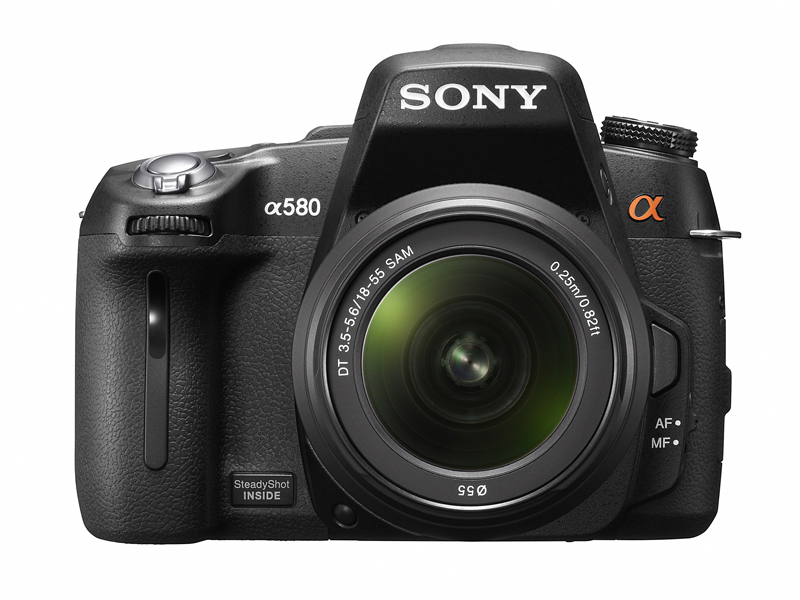Why you can trust TechRadar

Although the design of the Alpha 580 has its Alpha 550 predecessor as a template, a handful of changes distinguish the two. The most immediate difference is that the top half of the camera is no longer separated by a different finish, the camera now sporting the same mottled black all over.
The now taller mode dial has also consolidated its various scene options into one main setting, which leaves enough room for the Scene Panorama function, while the Smart Teleconverter option on the rear has been dropped in favour of a new movie-recording button.
Despite a small shift in their position, the top-plate buttons access the same dynamic range, sensitivity and drive mode options as before, as well as the Focus Check Live View option seen previously. This, which zooms in on an area in the live view feed to allow focus to be accurately adjusted, has now been updated to work in conjunction with both manual and auto focus, as the A550 only allowed the former.
The ISO and drive mode buttons sit right beneath the shutter release button, which means they are easily accessed; only the dynamic range option is out of comfortable reach of the forefinger, although with no relevant information displayed in the viewfinder for either of the three settings, it's likely that these will be changed in conjunction with the LCD screen rather than with the camera held to they eye.
The Alpha 580's outer casing is primarily an all-plastic affair, but with little creaking under pressure there seems to be little reason to doubt its solidity. The only areas around the body which sport a different finish are the grip, thumb rest and the side opposite the grip where the user left hand would ordinarily be, which are all lined with rubber.
All controls around the body are reasonably sized and clearly marked, and all have plenty of breathing space around them. As such, the Sony A580 is ideal for larger handed users who may find the controls offered on similar models a little cramped.
The multi-coated 3-inch LCD screen provides a 921k dot resolution, and features a small ambient light sensor which adjusts the monitor output to the shooting conditions.
Sign up for breaking news, reviews, opinion, top tech deals, and more.
The screen offers the same handy articulation as on previous Alpha models, but adjusting only over a horizontal axis makes it comparatively less flexible than Canon's EOS 60D and Olympus's E-5, both of whose screens pivot around a side hinge. This setup also means that it can't be protected by being folded against the rear of the camera, although this only a disadvantage by comparison than any major issue in itself.
It's possible to bring up a digital level gauge when using the Focus Check Live View option, although it's a mystery as to why this functionality is buried inside this option and not simply available all the time as on Sony's A33 – or when you compare the Sony A580 vs A55 models.
There's also no level indicator inside the viewfinder, nor is there any information inside the viewfinder with regards to functions you may wish to change while using it, such as sensitivity. There is, however, a manual focus warning, which helps if you've either left this on accidentally or knocked the focusing switch on the lens.
Current page: Sony A580 Review: Build quality and handling
Prev Page Sony A580 Review: Overview Next Page Sony A580 Review: Controls and features